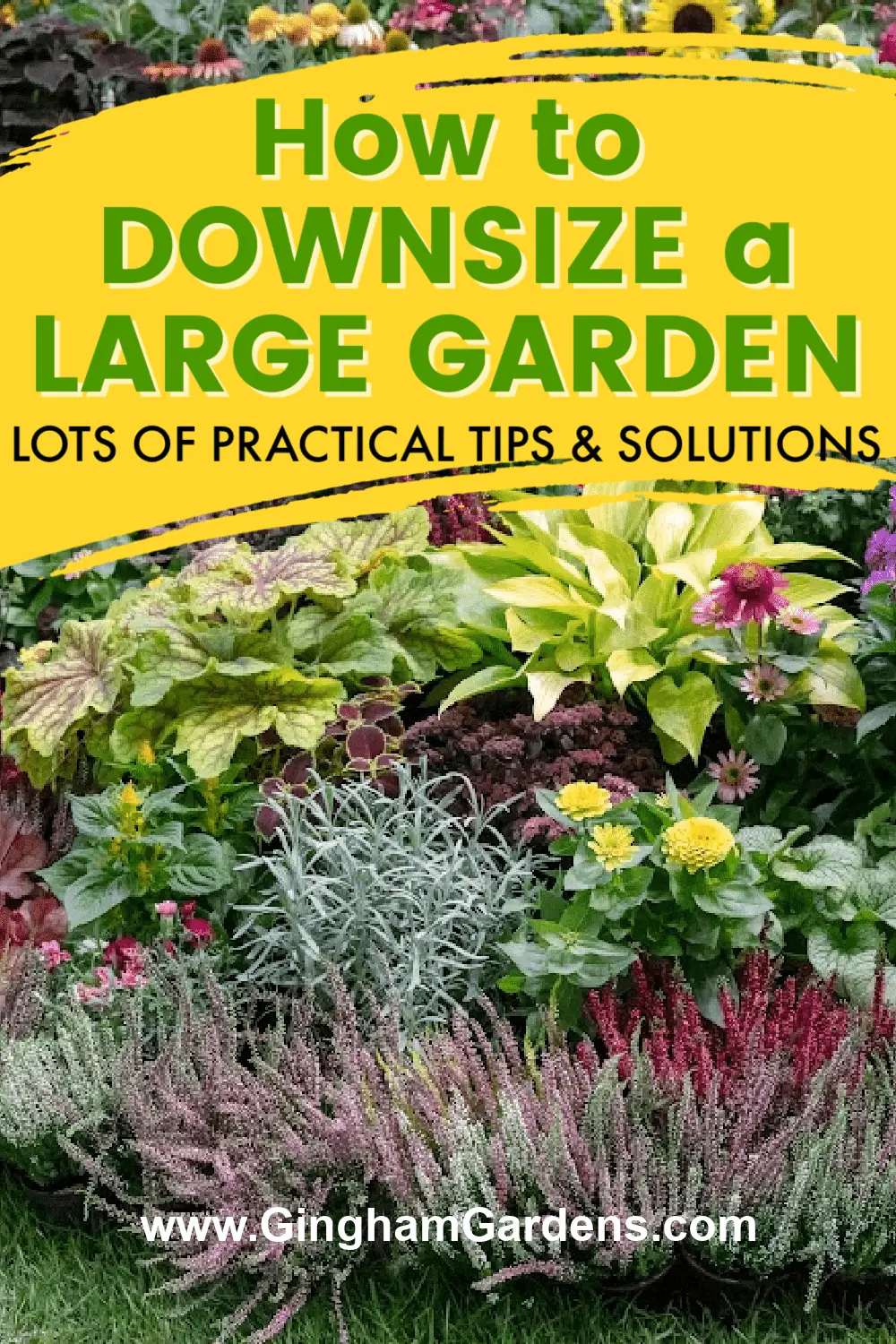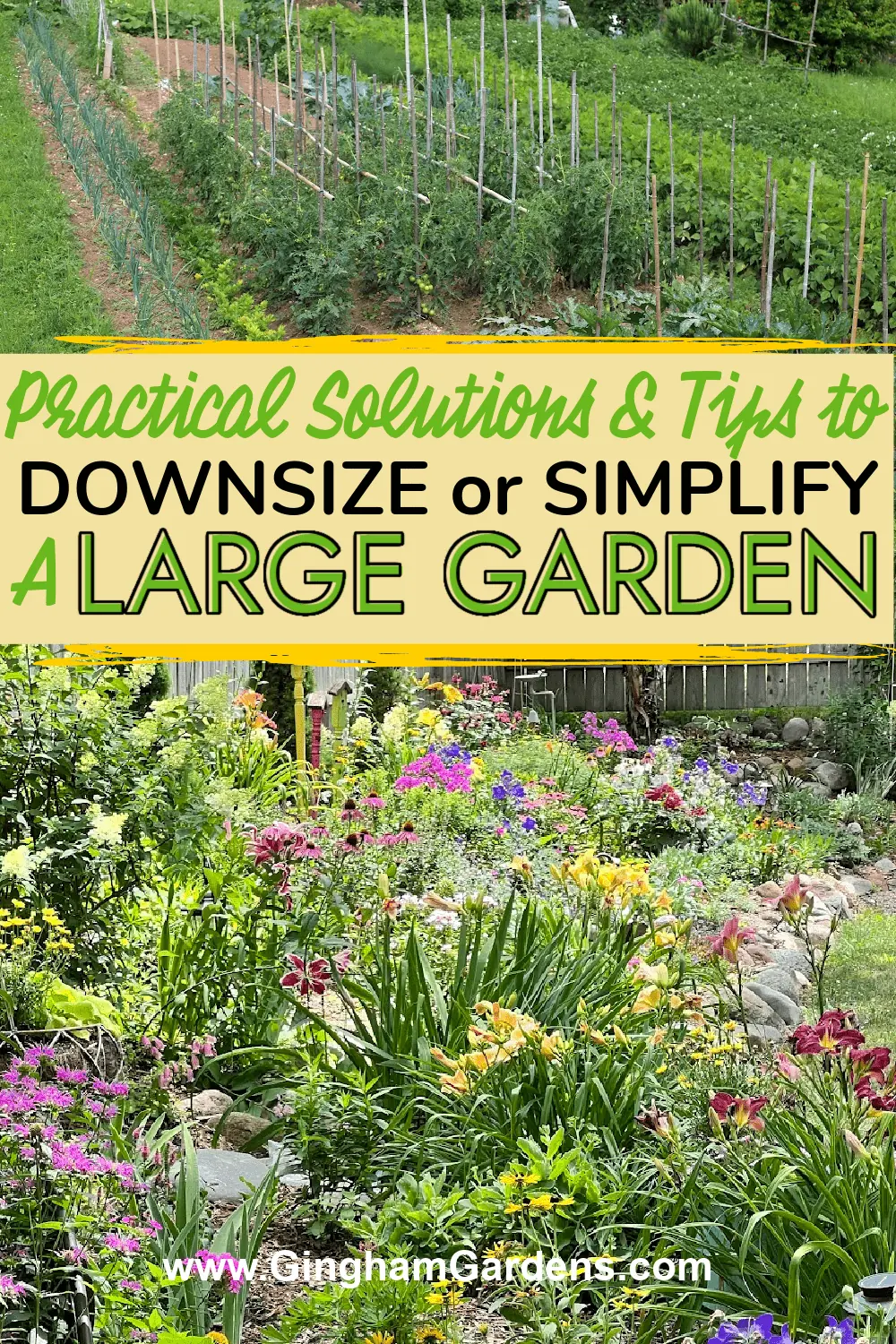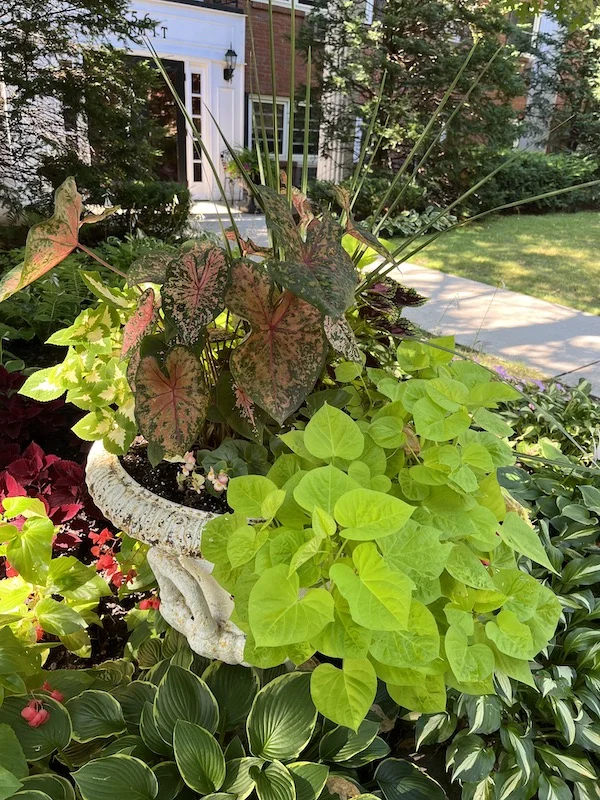If you find yourself with a sprawling garden and outdoor space that feels overwhelming to maintain, it might be time to consider downsizing. This article will provide you with practical tips and advice on how to downsize your garden and outdoor space, making it more manageable and enjoyable for you. From creating functional zones to choosing the right plants and furniture, we will guide you through the process of transforming your outdoor space into a cozy and inviting sanctuary. So, if you’re ready to simplify and enhance your garden, read on to discover how to downsize with ease.
Evaluate your current space
Assess the size of your current garden and outdoor area
Before you start downsizing your garden, it’s important to have a clear understanding of the size of your current space. Take measurements of your garden and outdoor area to get an accurate idea of the available space you have to work with. This will help you plan and make informed decisions regarding the downsizing process.
Determine how much space you have available for downsizing
Once you have assessed the size of your current garden and outdoor area, it’s time to determine how much space you can allocate for downsizing. Consider factors such as the usability of different areas, the amount of maintenance required, and your personal preferences. This will help you decide how much space you want to dedicate to your downsized garden.
Identify areas that can be repurposed or eliminated
To make the most of your downsizing efforts, identify areas in your current garden that can be repurposed or eliminated. Are there any unused or underutilized spaces that can be transformed into something more practical or aesthetically pleasing? Look for opportunities to repurpose areas for new features or expand existing ones. By doing so, you can maximize the potential of your downsized garden.
Prioritize your needs and wants
Consider your gardening goals and interests
Before you start reimagining your downsized garden, take some time to consider your gardening goals and interests. What aspects of gardening do you enjoy the most? Do you have a specific style or theme in mind? Understanding your goals and interests will help you prioritize what is important to you in your downsized garden.
Decide which features or plants are essential to keep
Consider the features and plants that are essential to your gardening experience. Is there a particular flower, shrub, or tree that holds sentimental value? Do you require specific features like a seating area or a vegetable patch? Identifying these essential elements will guide your decisions throughout the downsizing process.
Identify items or areas that can be removed or reduced
As you prioritize your needs and wants, also identify items or areas in your current garden that can be removed or reduced. This could include removing unnecessary structures, reducing the size of certain beds or borders, or even eliminating some plants altogether. By identifying what can be removed or reduced, you can create a more streamlined and manageable downsized garden.

Plan your downsized garden
Create a layout or design for your smaller garden
Once you have determined your priorities, it’s time to create a layout or design for your downsized garden. Consider the available space and how you can optimize it to incorporate your desired features and plants. Sketch out a rough plan or use online design tools to visualize your downsized garden before implementing any changes.
Consider the scale and proportions of your new space
When planning your downsized garden, pay attention to the scale and proportions of your new space. Avoid overcrowding by selecting plants and features that will complement the size of your garden. Be mindful of how different elements will interact with each other and the overall visual balance of your downsized garden.
Explore different gardening styles or themes that suit your downsized garden
With a smaller space, you have the opportunity to explore different gardening styles or themes that are better suited to your downsized garden. Whether you prefer a minimalist, cottage, or Mediterranean style, choose a theme that aligns with your preferences and enhances the overall atmosphere of your downsized garden.
Choose the right plants
Select plants that are suitable for smaller spaces
When downsizing your garden, it’s crucial to select plants that are suitable for smaller spaces. Look for compact or dwarf varieties that will thrive in containers or smaller beds. Consider the mature size of the plants and choose those that won’t overwhelm your downsized garden.
Opt for compact or dwarf varieties
Compact or dwarf varieties of plants are excellent choices for downsized gardens. These plants have been bred to grow in smaller spaces, making them ideal for maintaining a balanced and aesthetically pleasing garden. Look for labels or ask at your local nursery for recommendations on compact or dwarf varieties of your favorite plants.
Consider the sunlight and soil conditions in your downsized garden
Before choosing plants for your downsized garden, consider the sunlight and soil conditions in the space. Some plants require full sun, while others thrive in partial shade. Assess the amount of sunlight your garden receives throughout the day and choose plants that will thrive in those conditions. Additionally, test your soil for its pH level and nutrient content, as different plants have different soil preferences.

Maximize vertical space
Utilize trellises, pergolas, or arbors for climbing plants
To make the most of your downsized garden, utilize vertical space by incorporating trellises, pergolas, or arbors. These structures provide support for climbing plants, adding height and visual interest to your garden. Not only do climbing plants maximize space, but they also create a lush and inviting atmosphere.
Hang baskets or pots on walls or fences
Another way to maximize vertical space is by hanging baskets or pots on walls or fences. This not only adds a decorative element but also frees up precious ground space. Consider using a variety of hanging baskets or pots to add texture and layers to your downsized garden.
Install vertical garden systems or planters
For an innovative and space-saving solution, consider installing vertical garden systems or planters. These systems allow you to grow plants vertically, utilizing walls or other vertical surfaces. Vertical gardens are not only practical but can also serve as a striking focal point in your downsized garden.
Organize storage efficiently
Evaluate your storage needs for gardening tools and equipment
As you downsize your garden, take the time to evaluate your storage needs for gardening tools and equipment. Determine what items are essential and organize them accordingly. Consider the frequency of use and accessibility when planning storage solutions for your downsized garden.
Use space-saving storage solutions like sheds or cabinets
To maximize your downsized garden space, use space-saving storage solutions like sheds or cabinets. These structures provide ample storage space without occupying too much room. Look for compact options that fit the scale of your downsized garden.
Utilize vertical storage options like hooks or wall-mounted racks
In addition to sheds or cabinets, utilize vertical storage options like hooks or wall-mounted racks. These allow you to hang gardening tools and equipment, keeping them easily accessible while also saving precious floor space in your downsized garden.

Minimize maintenance requirements
Choose low-maintenance plants that require less attention
One of the advantages of a downsized garden is the ability to minimize maintenance requirements. Choose low-maintenance plants that require less attention, such as succulents, ornamental grasses, or native plants. These plants are generally more resilient and require less pruning, watering, and fertilizing.
Opt for mulching to reduce weed growth and water evaporation
To further reduce maintenance requirements in your downsized garden, opt for mulching. Mulch helps to suppress weed growth and retains moisture in the soil, reducing the need for frequent watering. Choose organic mulch options like wood chips or straw for a natural and eco-friendly solution.
Install automated irrigation systems for efficient watering
To streamline watering in your downsized garden, consider installing automated irrigation systems. These systems can be set on timers or sensors, ensuring that your plants receive the right amount of water without the need for constant manual watering. This not only saves you time but also promotes water efficiency.
Create multi-functional spaces
Combine different functions in a single area, such as a seating area with raised beds
In a downsized garden, it’s important to make the most of every available space. Create multi-functional spaces by combining different functions in a single area. For example, you can create a seating area with raised beds for growing herbs or vegetables. This not only saves space but also adds interest and functionality to your downsized garden.
Use furniture that doubles as storage spaces
When selecting furniture for your downsized garden, opt for pieces that double as storage spaces. For example, choose benches or ottomans with built-in storage compartments. This allows you to keep garden essentials close at hand while also minimizing clutter in your downsized garden.
Implement dual-purpose features like a water feature that also acts as a bird bath
To maximize the functionality of your downsized garden, implement dual-purpose features. For instance, consider a water feature that also acts as a bird bath. This not only adds visual appeal to your garden but also attracts birds, creating a tranquil and vibrant space.

Utilize container gardening
Grow plants in containers or pots instead of in-ground
When downsizing your garden, container gardening becomes a valuable technique. By growing plants in containers or pots instead of in-ground, you have more flexibility in terms of positioning and can easily move them around to experiment with different arrangements. Container gardening allows you to achieve a diverse and dynamic downsized garden.
Use pots with wheels for flexible positioning
For added convenience and flexibility, use pots or containers with wheels. This allows for easy repositioning, especially if you have limited space and need to maximize sunlight exposure or change the arrangement of your downsized garden. With pots on wheels, you can easily adapt your garden layout to suit your needs and desires.
Experiment with creative container arrangements or hanging baskets
In a downsized garden, creativity plays a crucial role. Experiment with creative container arrangements or hanging baskets to add visual interest and uniqueness to your garden. Mix and match various colors, textures, and sizes to create a vibrant and captivating downsized garden.
Embrace minimalist aesthetics
Keep the design simple and uncluttered
As you downsize your garden, embrace minimalist aesthetics by keeping the design simple and uncluttered. Avoid excessive ornaments or overcrowded plantings. Instead, focus on clean lines, open spaces, and a sense of tranquility. A minimalist design allows your downsized garden to feel more spacious and inviting.
Opt for clean lines and minimal ornamentation
When selecting features or structures for your downsized garden, opt for clean lines and minimal ornamentation. Choose sleek and modern designs that enhance the overall aesthetics without overwhelming the limited space. By maintaining a consistent and minimalistic style, your downsized garden will appear visually appealing and well-organized.
Choose a limited color palette for a cohesive look
To achieve a cohesive and harmonious downsized garden, choose a limited color palette. Select a few complementary colors and stick to them throughout your garden design. This creates a sense of unity and tranquility, making your downsized garden visually appealing and balanced.
By following these steps, you can successfully downsize your garden and outdoor space while still creating a beautiful and functional environment. Remember, downsizing doesn’t mean sacrificing your love for gardening. With careful planning and consideration, you can create a downsized garden that meets your needs and brings you joy for years to come. So, grab your sketchbook, explore different plant varieties, and start transforming your garden into your own personal oasis. Happy downsizing!


